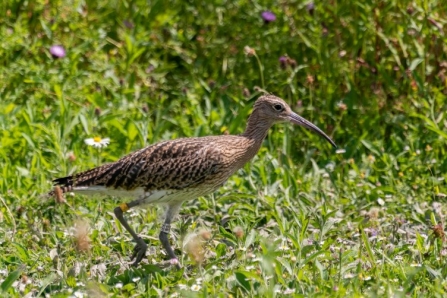Local landowners, farmers, residents and others gathered at Redmarley village hall (a stone’s throw away from Hardwick Green Meadows) to learn about the importance and value of floodplain meadows and discuss the current status of curlew populations. We were proud to have four excellent speakers who delivered fascinating presentations.
Emma Rothero, Project Manager from the Floodplain Meadows Partnership, got us underway and we discovered that, for centuries, floodplain meadows were the equivalent of the village petrol pump - hay being the petrol, which fed and fueled the animals that provided food and power. She explained how, over time, different land owners would have had different shaped and sized lots of floodplain meadows; as the population grew, each allocated lot became smaller. The statement below, written by landscape historians Brian and Thompson, sums up the huge importance of floodplain meadows economically and culturally, with specific reference to the Lugg Meadows:



